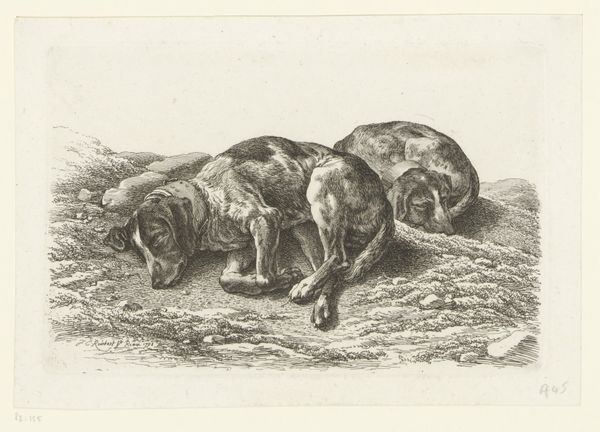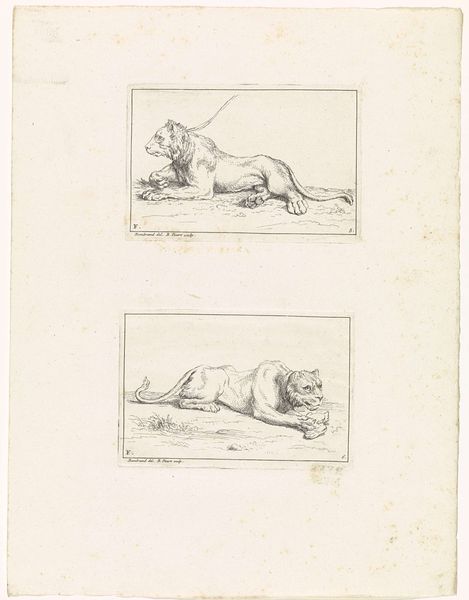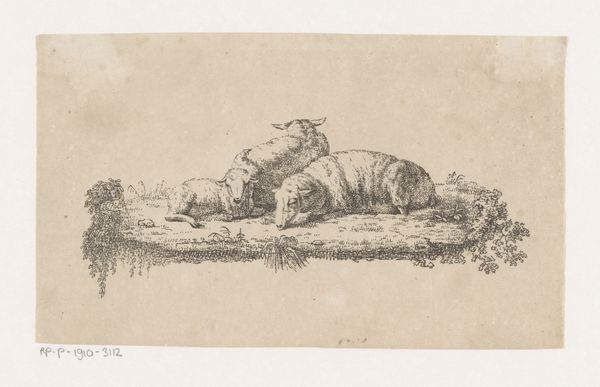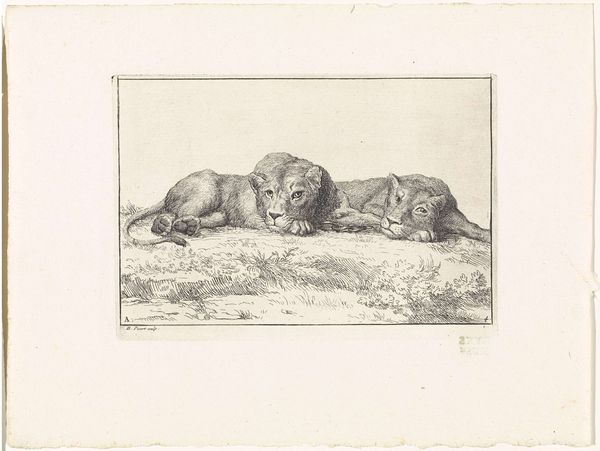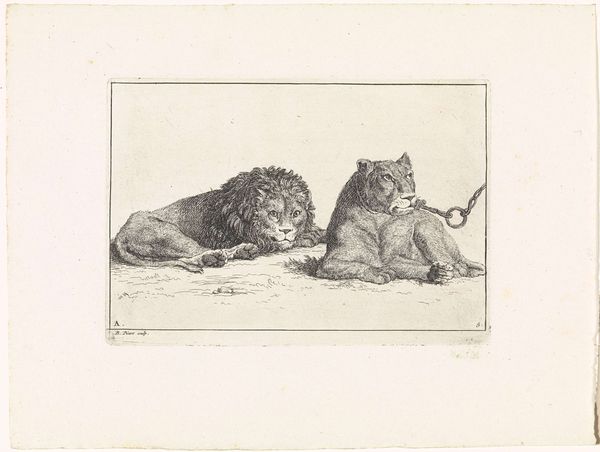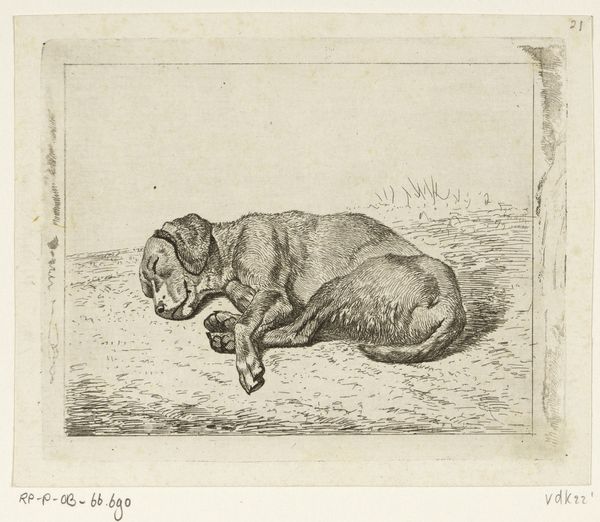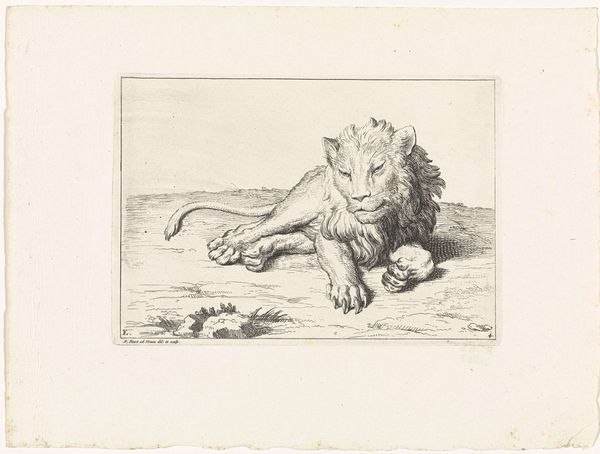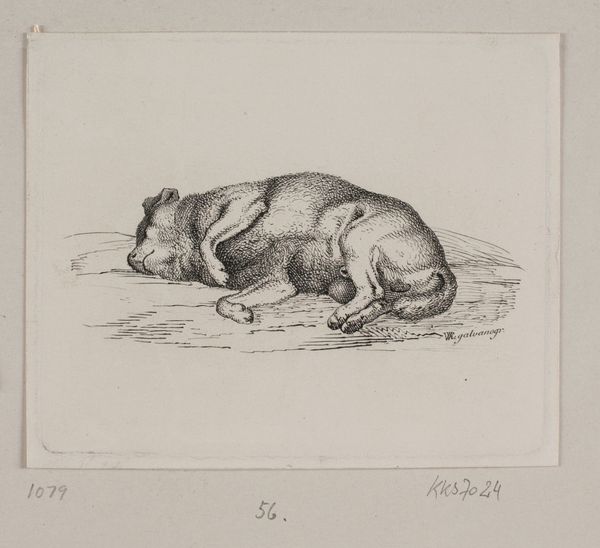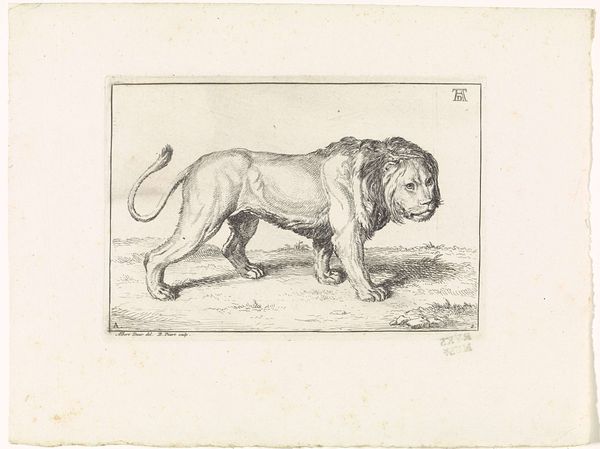
print, engraving
#
baroque
# print
#
pen sketch
#
landscape
#
figuration
#
form
#
line
#
genre-painting
#
engraving
#
realism
Dimensions: height 120 mm, width 175 mm
Copyright: Rijks Museum: Open Domain
Editor: This is "Twee liggende leeuwen," or "Two Lying Lions," an engraving by Bernard Picart from 1729. The detail is incredible for a print! What strikes me is the contrast – one lion seems free and relaxed, while the other is chained. What's your interpretation? Curator: That's a keen observation! Considering Picart's context, the engraving likely reflects the burgeoning interest in natural history during the Enlightenment. Lions, often symbols of power, here become objects of study, almost specimens. The chained lion isn’t merely an aesthetic choice; it speaks to the colonial project and the power dynamics inherent in scientific observation and classification. Editor: So, it's about control and categorization? I hadn't thought about that. Curator: Precisely! Think about the role of zoos and menageries at the time. Were these lions observed in their natural habitat, or were they confined? The image could be read as a commentary on the act of studying nature by removing it from its context, thereby dominating it. How does the landscape – or lack thereof – play into this interpretation for you? Editor: The barren background definitely amplifies the sense of isolation. It’s like they exist purely for observation, stripped of their natural environment and any narrative beyond their physical forms. Curator: Exactly! Picart offers more than just an image of lions. He presents a visual argument about power, knowledge, and the gaze. Editor: It’s fascinating how a seemingly simple engraving can reveal so much about the socio-political climate of its time! I'll definitely be thinking about this piece differently now. Curator: And I'm reminded how art can unveil the complex politics behind the era’s fascination with science and nature. A seemingly docile image reveals itself as quite charged!
Comments
No comments
Be the first to comment and join the conversation on the ultimate creative platform.


